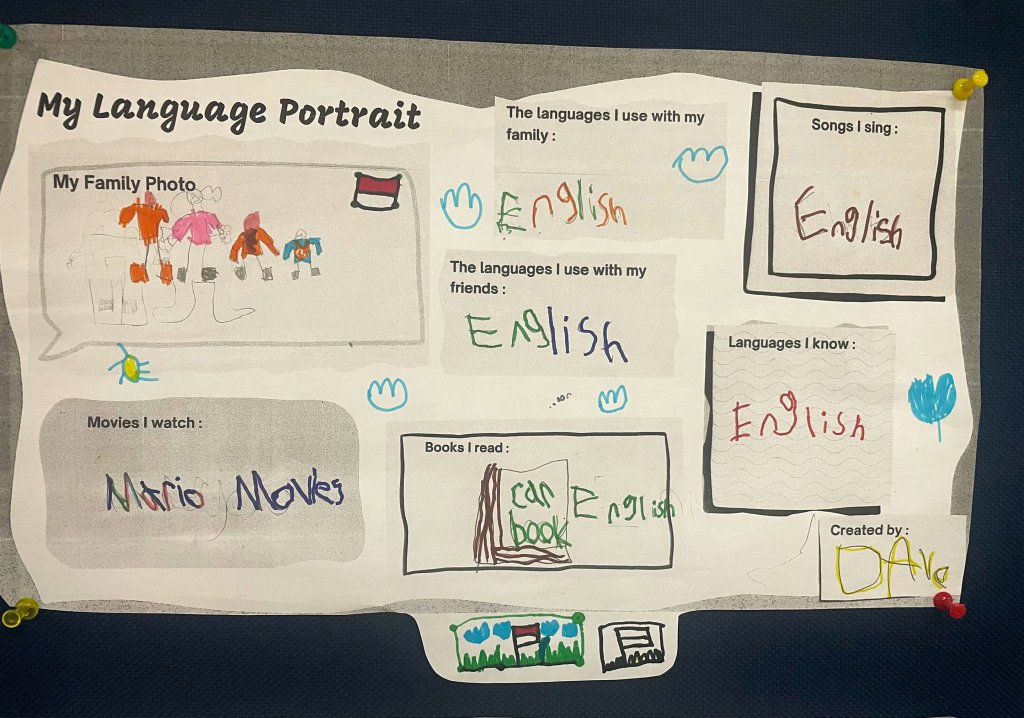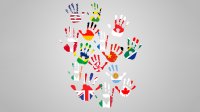Celebrating Linguistic Diversity in Your Classroom
A fun and meaningful activity can help early elementary students appreciate the different languages in their backgrounds.
Your content has been saved!
Go to My Saved Content.Language diversity has never been more real in classrooms around the world. With globalization comes increased mobility, and the language of instruction may not be the one our students choose when they think; speak to their parents, grandparents, and friends; watch TV; read; and listen to music. Acknowledging our students’ language backgrounds and experiences can be powerful: Not only does it contribute to fostering a sense of belonging, but also it supports learners in building their self-identity and celebrating each other’s differences. The question is: How can we do it in a meaningful and engaging way?
Language portraits support language-diverse classrooms
I’ve found that students can use language as a way to create a portrait of themselves. In my class, I have students make language portraits. Language portraits can come in different shapes and sizes, such as posters, collages, questionnaires, journals, and even poetry. The more creativity involved, the more likely students are to be engaged and share their narratives!

Their format is flexible and can be adapted to different contexts, school essential agreements, grade levels, and students’ needs, to name a few. Through them, students are encouraged to inquire into how, when, and why they use certain languages. The language portraits all depend on the prompts, which can even be cocreated with students. They might include the following:
- The language(s) I think in
- The language(s) I use with my family and friends
- The language(s) I am learning now
- The language(s) I have picked up along the way
- The language(s) I would love to learn
With my grade one students this year, the prompts included “Songs I sing,” “Books I read,” “The language I use with my family and friends,” “Languages I know,” “Movies I watch,” and “My family photo.” The students’ colorful drawings and writings were a delight to look at, but, most important, their reflections resulted in many insights to support their learning and their sense of belonging.
Language Portraits Have a 6-Step Process
Receiving a task to complete without any context or purpose is uninspiring, to say the least. Therefore, I planned a six-step process for the learning experience in my grade one class.
- To set the scene, we read Victor D. O. Santos’s story, Little Polyglot Adventures: Dylan’s Birthday Present as a group.
- I modeled the making of my own language portrait while explaining how my language of preference varies according to what I’m doing and to whom I’m speaking.
- In small groups, I sat together with my students to brainstorm and discuss the languages they’re exposed to and use.
- Ready, set, go: Students developed their language portraits.
- My students proudly presented their productions by explaining each section of their language portraits. This was an essential part of the process; without it, a language portrait might be just one more task to be completed and forgotten forever.
- Language portraits were displayed on the outside board as a celebration of their reflection and learning.
The process above worked very well for my context and age group and is not a fixed recipe or formula for success. I encourage teachers to think of their students when setting the mood and supporting students to reflect on their language backgrounds.
Language Portraits Help Guide Instruction
Through these presentations, I found out that my Indonesian student communicates in Indonesian with his Indonesian mother and French with his Madagascan father. Another student speaks Mandarin to their grandparents and is learning Korean by watching Korean dramas. English is the main language of instruction at school, but there could be other languages in my students’ backgrounds.
Knowing this information guides me when choosing books for our reading corner, tales to read, and facts that will speak to them. It also helps me to connect with my students: One smiled from ear to ear one morning when I surprised him with a “Bonjour.” Now, when we sing “Happy Birthday,” we do so in all the languages represented in our class. Chaotic? Yes. Inclusive? Always!
Apart from the helpful data for planning, goal setting, and developing learning experiences that reflect my students’ realities, language portraits have been equally valuable for my students. Most of them had never really thought about how the languages they speak make them multilingual or wondered where their communication preferences come from. Creating a language portrait is a powerful, reflective exercise of self-identity.
Language Portraits Have Lasting Benefits
My school saves students’ language portraits in their digital portfolios, enabling teachers, families, and students to easily refer to them in the future and make comparisons. In the past, I placed them in students’ pass-on files and physical portfolios, which they carried to other grades. The examples I’ve shared reflect my experience with grade one, but language portraits can be developed across a continuum, from early grades to high school, with different levels of support and guidance according to grade-level needs.
Language portraits have developed my first-grade students’ understanding of their own language experiences and raised their awareness and appreciation of differences. My students support each other to communicate and are curious about how to say words in other languages. Those who are developing their fluency in English understand that they aren’t alone and that most in our class come from diverse backgrounds.
Acknowledging and celebrating diversity fosters communication skills, confidence, and well-being. Above all, it helps students to be proud of themselves and their languages and to feel seen and valued—all of which are so important when building a culturally responsive learning community and preparing students for a multicultural world.
